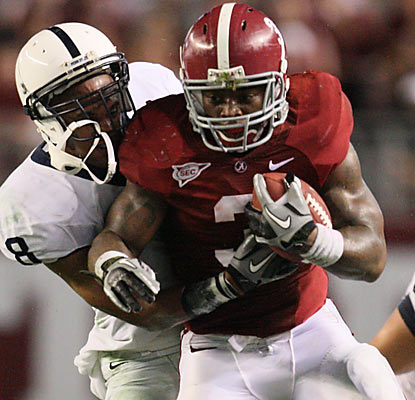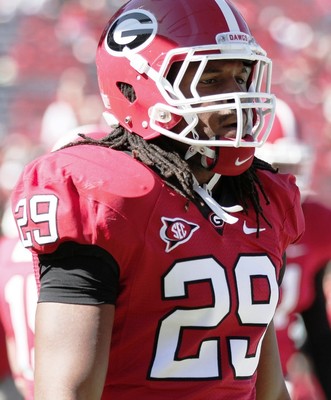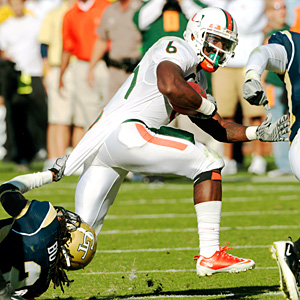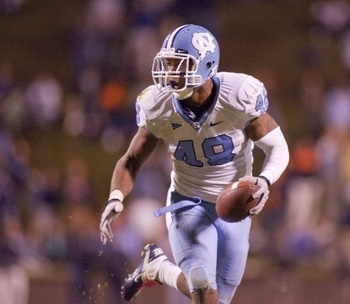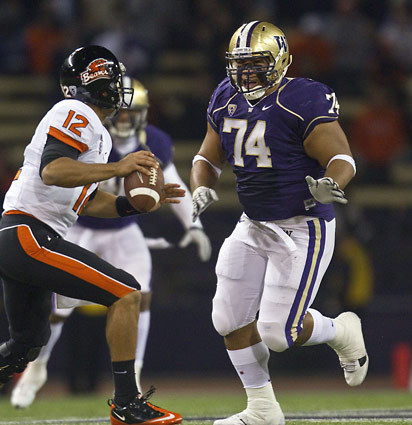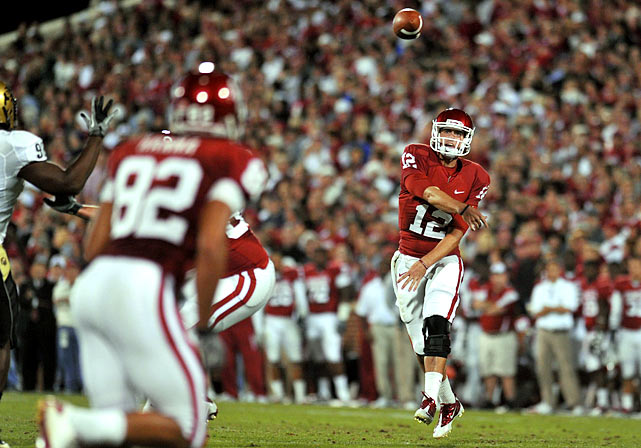Guest blog post written by Andy Heiting-Doane
Some Seahawks fans think the team is better off losing than winning this season. I understand the viewpoint. There are many examples of NFL teams going from average to perennial contenders by picking a quarterback in the top five. It appears that Peyton Manning alone is the difference between the Colts being one of the best teams in the league and being easily the worst. Colts fans probably say to themselves daily, “Thank goodness we lost all those games in 1997 and got to draft Manning.”
I am here to tell you that is not what you should hope for with this team. I asked Rob if I could post an “always hope the Seahawks win” guest post and he graciously agreed.
“So what is really best for the Seahawks? Aim for another 7-9 record by finishing strongly, pick in the mid-teens and risk spending another year scraping around at the greatest position of need? … Or is it actually best that this team loses out, picks above Miami, Washington, Cleveland, Denver and any other potential rival?”
My point is that yes, we should aim for another 7-9 record, or even 8-8, by finishing strongly. My hope is to convince you that this team will be better, long-term, if this season ends with the Seahawks 8-8 than if the final record is 3-13.
I want to assume a few things before we get started, just to make sure we’re all having the same conversation.
Assumption #1: No one wants the team to actually try to lose. Players would never make bad plays intentionally, defying a head coach who is trying to win. At some level most or all of the players are playing for their contracts and surely no one wants the coach to intentionally lose games? He would lose the team permanently. No one, from owner of the team to the long snapper, would respect him. We would be looking at yet another new regime and another complete overhaul of the roster. If you agree that they should not try to loseand you still think the Seahawks are better off losing, what you’re saying is that you think the Seahawks are better off being a team that legitimately earns a 3-13 record. A team whose current talent level is enough to lose four games for every one game it wins.
Assumption 2: No one wants this team to pick in the top five every year. One might argue that the only way to build a truly exceptional, dynasty-forming roster is to have top five draft picks at quarterback, defensive end, cornerback, left tackle, and wide receiver. But to get there you would have to endure losing season after losing season, free agents would walk away from the team, and you would once again probably be looking at a new regime and another complete overhaul. Also, as I will argue below, it would be impossible to have truly elite players and continue to lose enough games to pick in the top five year after year. If you agree with Assumption #2, you’re saying the Seahawks will hopefully take one more dip into the top five picks and then start winning and become a contender, thereby picking in later rounds into the future.
If you agree with those assumptions then this comes down to a little football math. You want to take our current roster, add a quarterback, and end up with a contender. Which of these two formulas do you think is more likely to result in a contender over the next five years?
Formula #1
[Elite prospect QB taken in the top 5] + [a current Seahawks roster that just earned a 3-13 record] = Super Bowl Contender
Formula #2
[Sub-elite prospect QB taken in top 20] + [a current Seahawks roster that just earned an 8-8 record] = Super Bowl Contender
I argue in this post that Formula #2 is the best and fastest way to become a Super Bowl contender.
Alternatively, if you really want one of those top five picks, I would rather have to trade up for it than stink badly enough to actually earn it. I think having players on the team this year that will earn you more wins is more valuable than whatever pick you have to give up to move up. So the alternate math is:
Formula #3
[Elite prospect QB taken in the top 5] + [a current Seahawks roster that just earned an 8-8 record] – [next year’s first-round draft pick] = Super Bowl Contender
It’s all about the rest of the team. It’s all about the eleven starters on defense and the ten starters on offense who are not named Tarvaris. I think this team has several very good young players on defense – Kam Chancellor, Earl Thomas, Richard Sherman, and “young enough” Brandon Mebane, Brandon Browner, Red Bryant, and Chris Clemons. Very good young players on defense win more than three games in a year, even if the quarterback sucks.
I think this team has several very good young players on offense – Doug Baldwin, Russell Okung, and “young enough” Mike Williams, Marshawn Lynch, Zach Miller, and Sidney Rice. Very good young players on offense win more than three games in a year, even if the quarterback sucks.
Drum-roll…
So, if we only win three games this year, those players aren’t good. We can’t choose to play the Packers, Steelers, and 49ers twice each. The remaining schedule includes two games against the Rams and one each against the Redskins and the Cardinals. Losing all four of those games means that this team sucks. There is no other way around it.
This week, radio host Mike Salk has been repeating the question as whether we, the fans, would like the Seahawks to “play well, but lose.” You cannot play well but lose twice to the Rams. You cannot play well and lose to the Redskins and Cardinals.
Think about the Cleveland game. That’s a game that should have been won, but was lost. How did Kam Chancellor look in that game? Terrible. Do you want Kam Chancellor to look terrible in seven more games? If Kam Chancellor looks terrible in seven more games, are you still hopeful that he’ll develop into a Pro-Bowl level player? If our young defensive backs can’t stop the Rams’ pathetic receivers, in each of the two games, they are not good players. If our defense can’t stop the uniformly awful Redskins offense, it is not a good defense.
It’s not fair to look at only one player in one game (hey, Red Bryant looked great against Cleveland). This is a whole team. It is not possible for Chancellor, Thomas, Sherman, Mebane, Browner, Bryant, Clemons, Baldwin, Okung, Williams, Lynch, Miller, and Rice to play well, or even half of them to play well, and lose those four games. In fact, if most of them have pretty good games, I submit to you they will win at least one of the three other games – Philly and San Francisco at home and the Bears in Chicago. Good players win games. Good defensive backs can win games even with a crappy quarterback. Good offensive line play can win games even with a crappy quarterback. Run-stopping defensive linemen can win games even with a crappy quarterback. If we don’t win games, the other players on the team are not good.
So which would you rather have: a top five quarterback added to a roster that stinks, or a top twenty quarterback added to a roster that is mostly good? Matt Barkley plus the team that lost to the Rams twice in a year, or Robert Griffin III plus the team that beat the Rams twice in a year?
Take a look at the last several #1 overall picks (all quarterbacks). Bradford, Stafford, and Cam Newton did not make their teams into contenders alone. The Rams and Panthers both suck this season. The Lions look pretty good, but I see a lot of players contributing to that, not just Stafford. Remember, nobody wants to be the Lions with losing season after losing season adding up to repeated top ten picks. It’s all about being one player away from a being a twelve win team. A 3-13 team is not one player away from winning 12 games. An 8-8 team might be one player away from winning twelve games.
Take a look at the 2008 Jets. They finished 9-7 and “missed out” on the opportunity to draft in the top 5 and pick Mark Sanchez with their own pick. They traded up to get the pick that they could have gotten for free by losing 12-13 games. With their #5 pick, they got a quarterback prospect who was inferior to the #1 overall pick, Matthew Stafford, yet the Jets went to the AFC championship the next two years. Why? Because Mark Sanchez was good enough and because the rest of the roster was very good. The rest of the roster that helped them finish 9-7 and ruin their draft position. What if the Jets had picked in the teens and taken Josh Freeman? Anyone want to argue that they would have been worse?
Picking outside the top five this year is going to mean you can’t take Andrew Luck and it will probably mean you can’t take Matt Barkley without giving up some other draft picks. Yet picking outside the top five this year means you’ve got a good roster. You’ve got players who can earn wins even without a franchise quarterback. What is that roster going to look like when you do add a franchise quarterback? Even if it’s not Andrew Luck or Matt Barkley, that roster is going to look great.
Before they ever put on an NFL helmet, it’s easy to say that the “elite” or top-tier quarterback prospects are superior to the second-tier prospects and that getting one of the top guys will be the difference between Super Bowl and bust. In history, the difference is not that clear. Stafford has been better than Freeman, but not far better. Matt Ryan has been better than Joe Flacco, but not far better. Brady Quinn was equal to or better than JaMarcus Russell. Jay Cutler has been far better than Matt Leinart. Aaron Rodgers has been far better than Alex Smith. I think an argument could be made that Roethlisberger is as good as Philip Rivers and I would take either of them over Eli Manning.
I know, going further back shows you some counter-examples like Carson Palmer/Byron Leftwich and Peyton Manning/Ryan Leaf, but in recent years examples of “first quarterback taken in the draft is far better than the others” is outnumbered by examples of “they’re about the same” and “the second or third guy is better.”
Looking back at those drafts, wouldn’t you be perfectly happy with Freeman, Flacco, or Cutler (I won’t even ask about Rodgers) if it means that your core of young talent on this team is ready to win? Ready to beat the Rams twice? Ready to beat San Francisco on our own turf? I’ll take my chances in that second tier of prospects in exchange for not becoming the Rams – a great young quarterback surrounded by giant holes at other key positions. I’d rather trade up and lose a draft pick than have Richard Sherman and Brandon Browner get smoked by John Beck or Rex Grossman.
I would love to have Andrew Luck or Matt Barkley lead this team for the next fifteen years but I would rather have a second-tier prospect, who might be as good or better than Matt Barkley, surrounded by a complete team with young stars at other positions.



